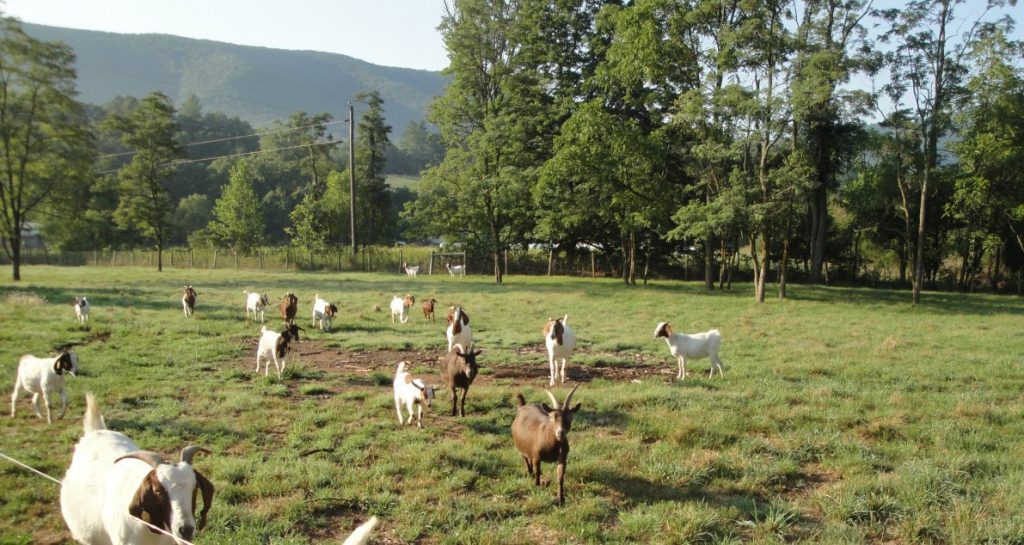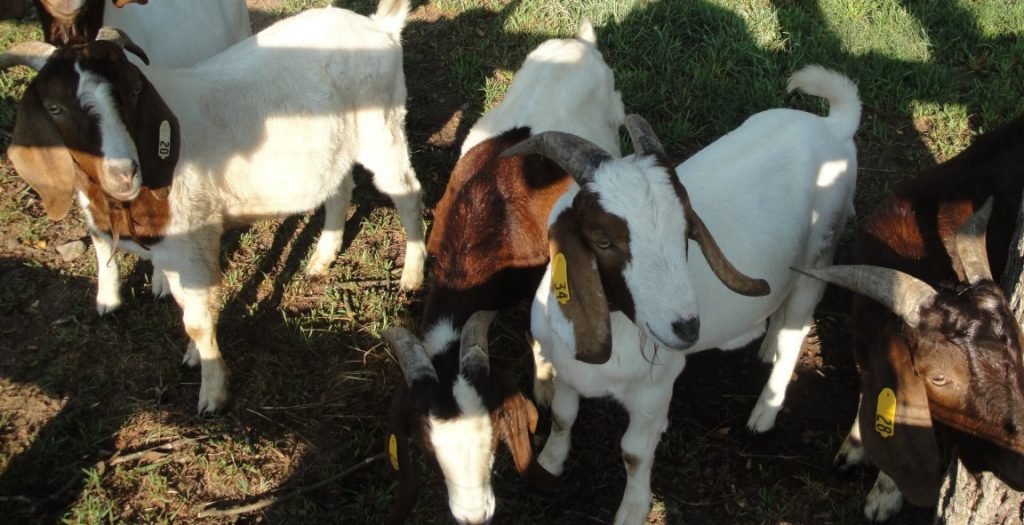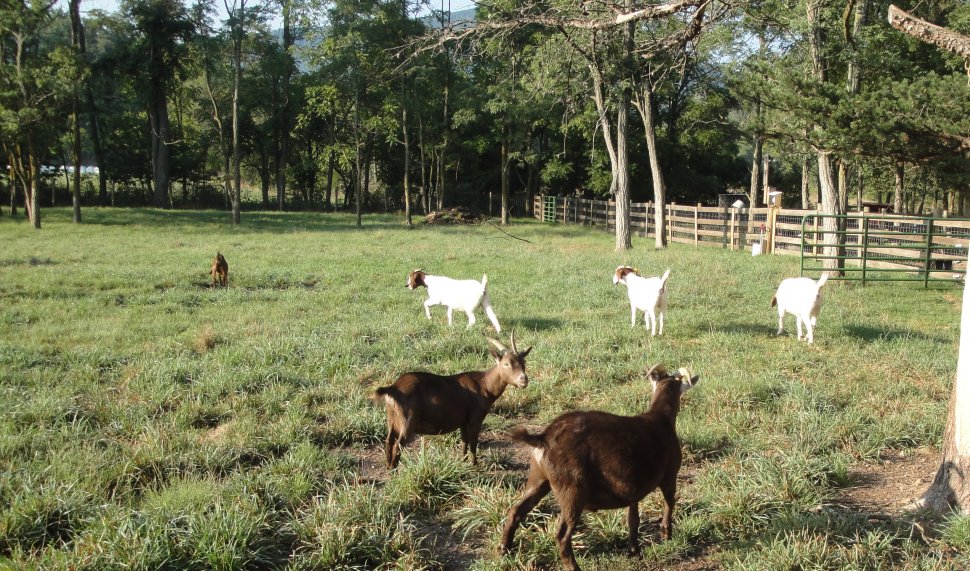
Boer goats were developed in South Africa. They are bigger and more solidly built than most goat breeds, which makes them better as meat goats. They are not as agile as other breeds, which is good since they are not as likely to climb onto structures and through fences. They were really developed as land clearing machines. They can climb steep hills and will eat almost everything in their paths, including thorny bushes and vines, such as multiflora rose, blueberries, kudzu and honeysuckle. That is why I am interested in them.
I want the goats to eat down all the brush that grows underneath my pine trees, especially after we do the thinning. They would be well-adapted to that job, since they can and will eat all the common brush that vexes me. In addition, they also fertilize as they go. There is also a growing market for goat meat because of the growing immigrant populations from Central America and the Middle East. It seems almost too good to be true. They don’t need much care, but unfortunately, I don’t think I can give them that.

Since I was taking Alex back to school at JMU, I took the opportunity to visit the goat farm of Jeff and Loretta Whetzel in rural Rockingham County. They are semi-retired. Jeff joked that goats are his hobby and he is lucky to break even. I enjoy the same situation with my forestry, so we understood each other. The Whetzels started raising goats only a few years ago and are kind of easing into the business.
The goat business is still mostly a small-farmer operation in Virginia. Although goats have been resident on American farms since the first settlers landed in Virginia and founded Jamestown, they have never been a big business. But the changing demographics might be creating business opportunities for goat farming.

Goats are fairly easy to take care of and do well in Virginia. Goats are criticized as “desert makers” because of their voracious appetites and promiscuous eating habits. But this is not a problem in Virginia, where we have enough rain and good soils to make the grass and brush grow. Goats are browsers, not grazers. That means they eat mostly leaves and brush, unlike cows that eat mostly grass, legumes and forbs. (Of course, goats also eat grass and forbs; they just have a wider diet.)
Goats will eat pine needles and so you cannot put goats into a working pine forest until the trees are tall enough that goats cannot reach the tops or the vital branches of the crop trees. For practical purposes, this means the trees need to be about ten feet high (about five years old for a loblolly pine in Southern Virginia), since goats can reach up about five feet by standing on their hind legs. They will eat pine bark, but only if there is not other things to eat. Presumably this would never become a problem if the goal was brush clearing. Jeff says that pine needles in the goat diet are beneficial, since something in the resin helps prevent worms.
The goats are very friendly. They are like dogs in that they follow you around. I can see the attraction of having them around.
But after talking to Jeff & Loretta, I realized that I cannot put goats on my lands unless and until I have to more time to devote. For one thing, I would need a lot of them to eat down 80 or 100 acres. I would also have to build electrified fences and dig some ponds or other water sources. My farms have flowing water, so that could be done. But you have to watch them. They require some grain supplements etc. And they need protection.
Coyotes are a problem. Jeff and Loretta have a big dog called Yogi that chases them away. He is a Pyrenees sheep dog, very big and tougher than coyotes, developed by shepherds Spain to fight off the local predators. He looks a lot like the podhale dog in Poland. This is another reason why I cannot put the goats on our land and be there to watch. The goats can be left more or less alone for a long time, but a dog cannot. We have coyotes, along with some bobcats and a few bears, in Southern Virginia too, so we need that protection.
Anyway, I have to put my goat plan on hold for at least the next couple of years when I am in Brazil. We are thinning eighty-six acres this year. I plan to burn under those trees in 2012. After that and after the brush grows in, maybe it will be time to deploy some Boer goats.
